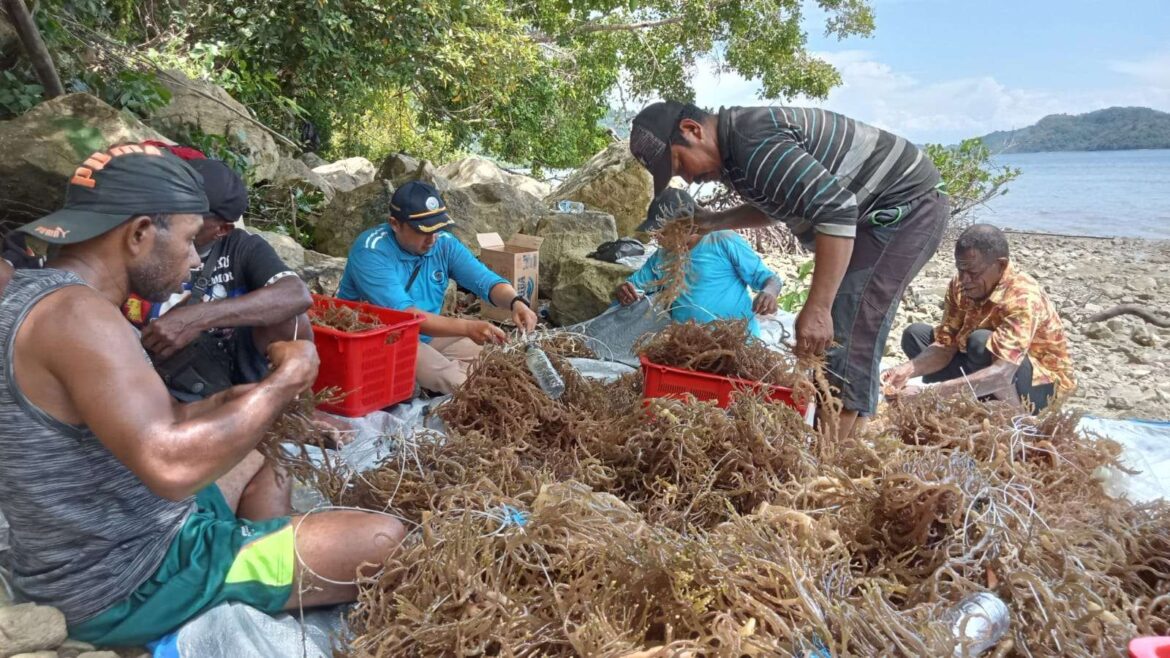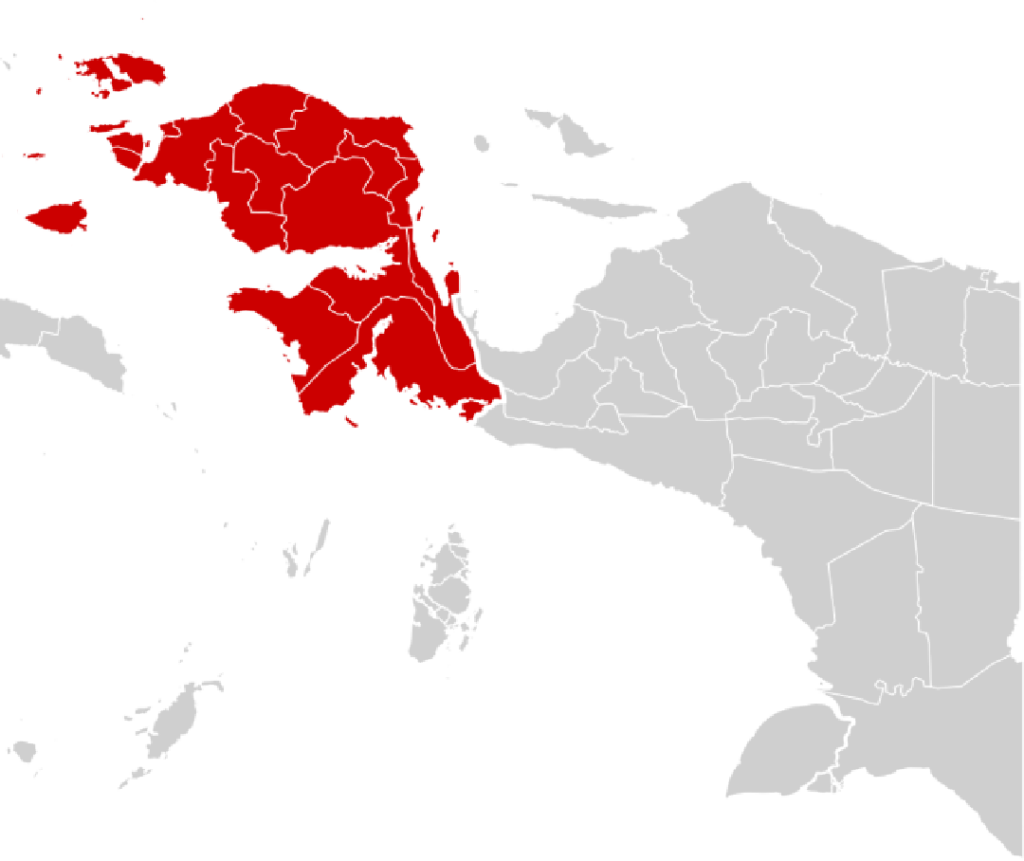In the quiet coves of Papua, where turquoise waters lap gently against sandy shores, a silent transformation is beginning to take shape. For decades, Papua’s economic narrative has been dominated by the extractive industries of mining, logging, and oil. Yet along the eastern edge of the Indonesian archipelago, a new story is emerging—one rooted not in the ground but in the sea. That story is the rise of seaweed cultivation, a sector that government officials, academics, and local communities increasingly believe could become one of Papua’s most significant economic engines. More than just a commodity, seaweed embodies the promise of a “blue economy”—an approach that balances economic growth with marine sustainability and community empowerment. The question today is not whether Papua can produce seaweed, but whether it can turn its abundant waters into a new frontier of prosperity.
From Coastal Tradition to Provincial Strategy
The government of Papua has been vocal in identifying seaweed as a promising new export commodity. According to the provincial Fisheries and Marine Affairs Office (DKP Papua), several districts in the Saireri customary region—such as Yapen Islands, Supiori, and Biak Numfor—possess ideal marine conditions for large-scale cultivation. These waters are nutrient-rich, relatively unpolluted, and calm enough to support consistent harvests of high-value species like Eucheuma cottonii. Ex-Governor of Papua Lukas Enembe once emphasized that Papua holds around 18,000 hectares of viable seaweed zones spread across its customary regions. That scale is vast compared to the small family plots currently in use, revealing how much of Papua’s marine potential remains untapped. Yet this untapped status is precisely what excites policymakers and investors, who see an opportunity to diversify Papua’s economy while avoiding the environmental costs of land-based industries.
Seaweed as a Livelihood in Coastal Villages
On the ground, seaweed cultivation is not entirely new to Papuan communities. For years, families in coastal villages have tied seed cuttings to ropes anchored in shallow water, waiting for the seaweed to grow before drying and selling it. The crop is low maintenance and requires minimal capital, making it accessible even to households with limited resources. In Sarawandori, a village in the Yapen Islands, women have been producing seaweed-based foods such as jelly, noodles, and snacks for local markets. In Teluk Wondama, West Papua, farmers recently sent 20 tons of dried seaweed to Surabaya, marking a milestone in connecting local harvests to national supply chains. These examples show how Papuans are experimenting with ways to add value to their harvests, though volumes remain modest. For many families, seaweed currently represents supplementary income rather than a primary livelihood. But the momentum is shifting, and with the right infrastructure, credit, and market access, that supplementary role could expand into a pillar of community resilience.
The Challenges of Scaling a Blue Economy
Still, there are many hurdles to overcome before Papua can call itself a seaweed powerhouse. A study by Kopernik highlighted more than ten challenges that farmers face across the value chain. Access to high-quality seed is inconsistent, leaving cultivators vulnerable to disease and low yields. Training in cultivation standards is limited, so methods often vary widely, producing uneven quality that buyers are reluctant to pay a premium for. Transportation remains one of the thorniest issues; moving seaweed from remote bays to major ports involves high costs and unreliable schedules. Storage and drying facilities are scarce, forcing farmers to depend on weather conditions for processing. All of these factors combine to reduce the bargaining power of small producers, who often must sell their seaweed to middlemen at lower prices. These challenges are not unique to Papua, but the province’s geographic isolation amplifies them. Without a stronger logistical backbone, the region risks being left behind in a national industry that is rapidly expanding elsewhere in Indonesia.
Why Papua Holds a Competitive Advantage
Despite the obstacles, Papua’s advantages remain compelling. Its waters are among the cleanest in the country, free from the industrial pollution that plagues some other cultivation zones. The relatively untouched marine environment gives Papua an edge in producing seaweed of exceptional quality, a fact that has not gone unnoticed by experts. Some studies suggest that Papuan seaweed is among the best in the world, both in texture and in yield potential. This reputation could allow Papua to position itself not just as another raw exporter, but as a supplier of premium seaweed for high-value industries such as cosmetics, pharmaceuticals, and bioplastics. The global demand for seaweed derivatives—whether for carrageenan in food processing or as inputs in sustainable packaging—is growing rapidly. As countries seek alternatives to plastics and synthetic additives, seaweed offers natural solutions. Papua’s pristine waters could therefore become an advantage not just for production volume, but for branding and marketing in global markets.
National Policies and the Push for Downstream Industry
At the national level, the government’s commitment to “hilirisasi,” or downstream processing, further strengthens Papua’s prospects. President Prabowo has identified seaweed as one of 26 commodities slated for greater value addition in Indonesia. Currently, the majority of Indonesian seaweed exports are shipped in raw or semi-processed form, allowing other countries to capture the high profits from turning them into gels, powders, or biomaterials. By encouraging the development of processing plants inside Indonesia—including in Papua—the government hopes to keep more of that value within the country. The Ministry of Marine Affairs and Fisheries has also been promoting innovation in non-hydrocolloid seaweed products, from bioplastics to animal feed supplements. This aligns closely with global trends, where investors and consumers alike are searching for renewable, biodegradable materials. If Papua can position itself at the intersection of these policies and markets, it could leapfrog from a marginal supplier into a strategic hub in the global seaweed value chain.
Local Leadership and the Call for Support
Local leaders are already calling for stronger support to make this transition possible. In Teluk Wondama, Governor of West Papua Dominggus Mandacan urged banks to ease lending terms for seaweed farmers, pointing out that lack of access to affordable credit remains a major bottleneck. Farmers need capital to expand cultivation, purchase better seed, and build drying facilities, but many are considered high-risk borrowers by formal financial institutions. Without tailored credit schemes or guarantees, expansion remains difficult. At the same time, local officials in Jayapura have begun encouraging communities in districts like Yokari, Depapre, Ravinirara, and Demta to adopt seaweed cultivation as a mainstay, hoping to reduce reliance on extractive industries and create new livelihoods. These efforts are small steps, but they signal a growing recognition that seaweed could be more than just another commodity—it could be a pathway to inclusive development.
Empowering Communities Through Seaweed
For coastal communities, the social impact of seaweed cultivation can be just as important as its economic potential. Unlike mining or large-scale plantations, seaweed farming is accessible to women, youth, and indigenous families who often find themselves excluded from mainstream industries. The work can be organized collectively, with families tending lines together and cooperatives pooling harvests for sale. In this sense, seaweed is not only an economic activity but also a form of social capital, strengthening community ties while generating income. Moreover, seaweed cultivation aligns with environmental stewardship. It does not require chemical fertilizers, it improves water quality by absorbing excess nutrients, and it contributes to carbon sequestration. In regions vulnerable to climate change and coastal erosion, seaweed farms can even act as natural buffers, stabilizing marine ecosystems while providing livelihoods.
Building the Roadmap for Growth
Looking ahead, the path to scaling Papua’s seaweed industry will require coordinated action on multiple fronts. Investment in seed quality and cultivation training must be prioritized, ensuring that farmers can meet international standards for export. Infrastructure such as drying racks, storage facilities, and shipping connections needs urgent development to reduce costs and wastage. Financing mechanisms tailored for smallholders must be expanded, perhaps through public guarantees or cooperative credit schemes. Local processing capacity should be built near cultivation zones so that value can be added locally rather than lost to middlemen or distant factories. Finally, direct partnerships between Papuan cooperatives and global buyers could bypass exploitative supply chains and secure better prices. Each of these steps is challenging, but together they form the blueprint for turning Papua’s seaweed dream into reality.
Ripple Effects Beyond the Coast
The bigger picture is equally significant. If Papua succeeds in scaling seaweed cultivation, the ripple effects will extend far beyond the coastal villages where it is grown. Higher incomes will lift rural households out of poverty, reducing dependence on government subsidies and external aid. The establishment of processing plants will create skilled jobs and attract investment in related sectors, from logistics to packaging. On an ecological level, seaweed farming will strengthen Papua’s marine ecosystems and bolster its climate resilience. At the national level, Papua’s rise as a seaweed hub would contribute to Indonesia’s broader ambition of becoming a global leader in the blue economy, showcasing that sustainable marine resources can rival the revenues of extractive industries.
Conclusion
For now, the image remains simple: women and men in small Papuan villages tending ropes in the sea, drying harvests under the sun, and selling them in modest quantities. But beneath that image lies enormous potential. The humble strands of seaweed may soon weave together a new economic narrative for Papua—one that connects local resilience to global sustainability. Whether Papua becomes a global player or remains a peripheral supplier will depend on the decisions made today about investment, infrastructure, and inclusion. The tide is turning, and the opportunity is real. As Indonesia pushes forward with its blue economy agenda, Papua stands at the water’s edge, ready to decide whether to ride the wave or let it pass by.


